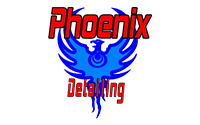Today’s automotive aficionados are gravitating towards paint protection solutions. This isn’t just a fleeting trend; it’s rooted in a car owner’s intrinsic desire to maintain the pristine appearance of their prized possessions. Enter the Xpel Film – a groundbreaking innovation that promises not just protection but a dazzling aesthetic appeal.
Xpel PPF
Post Installation
The post-installation phase of paint protection film (PPF) is a critical time that determines the longevity and efficacy of the protection. Once your vehicle is adorned with this protective layer, immediate care ensures the film adheres properly, devoid of imperfections. It’s essential to avoid washing the car until your 2 week follow up inspection, to prevent interference with the adhesive curing process.
Bubbles or haziness might appear initially, but these are often temporary and a result of the installation process. They should dissipate as the film fully settles. It’s important not to poke or prod these bubbles, as they’ll likely disappear on their own. If they persist after a couple of weeks, it might be wise to consult the installer.


Regular maintenance of PPF involves gentle washing to prevent dirt and contaminants from embedding on the surface. Using pH-balanced car shampoos and avoiding abrasive materials can ensure the film remains scratch-free and retains its clarity. While PPF comes with self-healing properties, it’s still advisable to be gentle to maximize its lifespan.
Xpel’s Ceramic Boost plays a pivotal role in the aftercare of paint protection film, acting as an indispensable ally in maintaining the hydrophobic properties of the film. It’s not just a product; it’s a safeguard that envelopes your vehicle’s protective film in a cocoon of enhanced shine and supplemental protection. When applied, Ceramic Boost forms a slick, protective layer atop the PPF, adding an additional shield against contaminants and UV rays while making the surface notably easier to clean.
Spot cleaning is essential for immediate threats like bird droppings, tree sap, or bug splatters. These can etch into the film if left unattended for long periods, so swift removal is key. Lastly, while the film offers robust protection against the elements, periodic professional detailing can keep the vehicle looking its best, ensuring that both the car and its protective film remain in peak condition. Proper aftercare not only maintains the aesthetic appeal but also ensures that the PPF provides durable protection for years to come.
Things To Avoid
Automated Brush Car Washes & Harsh Chemicals
Beyond the routine care, there are specific actions and elements that one must vigilantly avoid to ensure the paint protection film’s longevity and performance.
Avoiding automated brush car washes is paramount. These systems, while convenient, can be abrasive to the PPF, causing scratches and potentially reducing the film’s clarity over time. Hand washing, with the correct tools and techniques, is the ideal method to keep your protected vehicle sparkling.
Another critical aspect to consider is the type of cleaning agents and chemicals used. Some detergents or cleaners might contain harmful solvents or abrasives. Stick to products explicitly designed for or proven safe for use on paint protection films. The same goes for wax or sealants; ensure they’re compatible with your specific PPF.
Be cautious of any sharp or abrasive objects that come into contact with the vehicle. While the PPF is designed to guard against minor scratches, it’s not invincible. Things like gravel, road debris, or even certain types of jewelry can cause damage if they’re dragged or scratched against the film.



